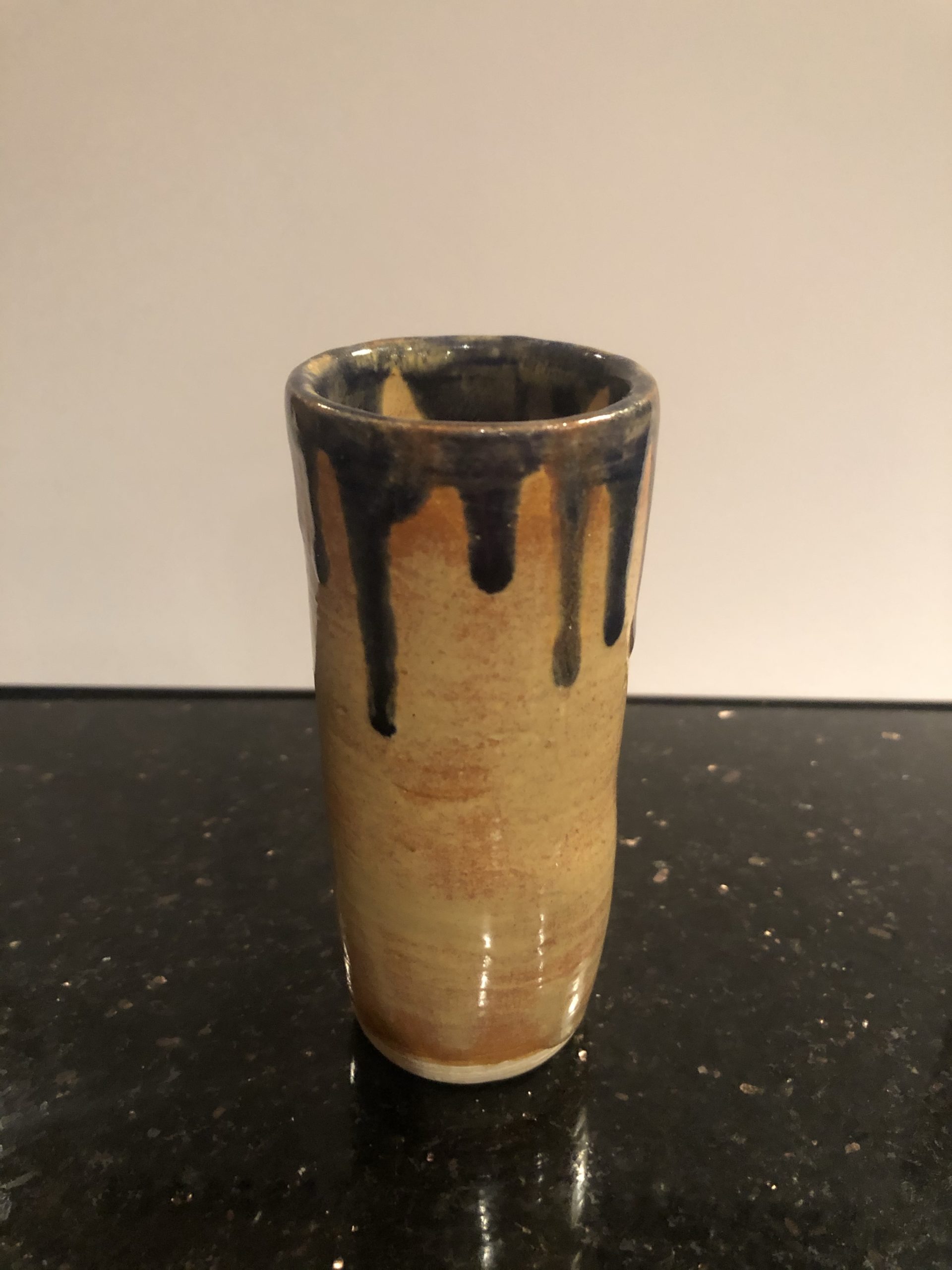A few weeks ago, Alli’s mother requested that I try making some small vases which she could use for making small flower arrangements. Always happy to accept a pottery challenge, I sat down and threw a dozen little vases. For the most part, it went well. There were a few little vases that got all timey-wimey and I accidentally smashed the rim on one of them while trimming, but overall they turned out really well.
After bisque firing, I packed up the pieces and brought them north. Alli, her mother, and the kids helped me paint them with a variety of Mayco Elements glazes, then I fired them in her kiln at Cone 06.
The results are lovely. Good, rich earthy tones and delicate translucent colors. I need to get some brighter colors before springtime, but these are great for the fall.
I’m especially entertained by the green vase. The drips are actually a blue paint, but the interaction of the chemicals in the dark blue glaze (applied first in two layers) and the green glaze (which I did as two layers of overcoat) is quite stunning. I had intended the base of each drip to be more jagged, but the glaze ran a little, creating this more gentle effect.
The next generation of microvases will have narrower necks. These are nice, but I’m told that the usual aesthetic of these “grandma pots” leans towards narrower necks. I’m hoping to find the time to throw a few pieces in that style tonight or tomorrow morning, so I’ll update the YouTube or Facebook livestream with a video when that happens.
You can find my pottery, including these vases, over at my Etsy store.






